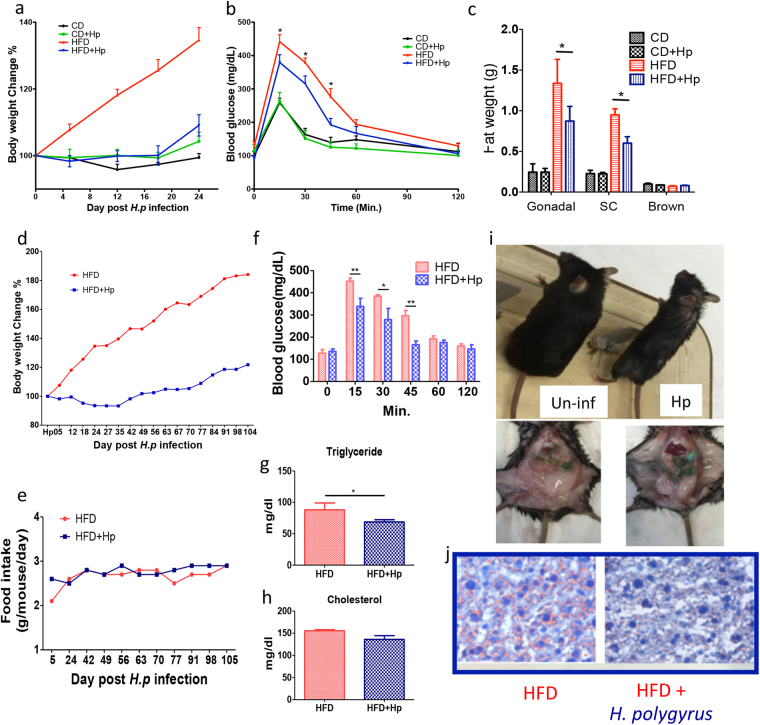Figure 2.
H. polygyrus infection attenuates HFD-induced obesity in mice. C57BL/6 mice fed with the HFD showed steady gain in body weight than those HFD infected with H. polygyrus through the course of experiment (a). Blood glucose levels were attenuated by H. polygyrus infection (b). Mice on the HFD accumulated more gonadal and subcutaneous fat than HFD fed infected mice (c). In long term experiments, C57BL/6 mice on HFD gradually gained more body weight (red line) than those HFD but infected with H. polygyrus (blue line) along a 104-day course (d). No differences in food intakes of HFD obese mice with (blue line) or without (red line) H. polygyrus infection (e). Blood glucose levels showed significant differences at 15, 30 and 45 minutes, between the two groups of mice (f). Triglyceride and cholesterol levels significantly dropped in H. polygyrus infected mice (g and h). The physical appearance (body size) in HFD-fed mice with (Hp) and without infection (Un-inf) (i) and the histological analysis of liver section of HFD induced mice showing severe steatosis, with fat deposits shown in un-infected mice using ORO staining (j). (n = 5–6; *p < 0.05; **p < 0.01. Two-tailed Student’s t-test).

